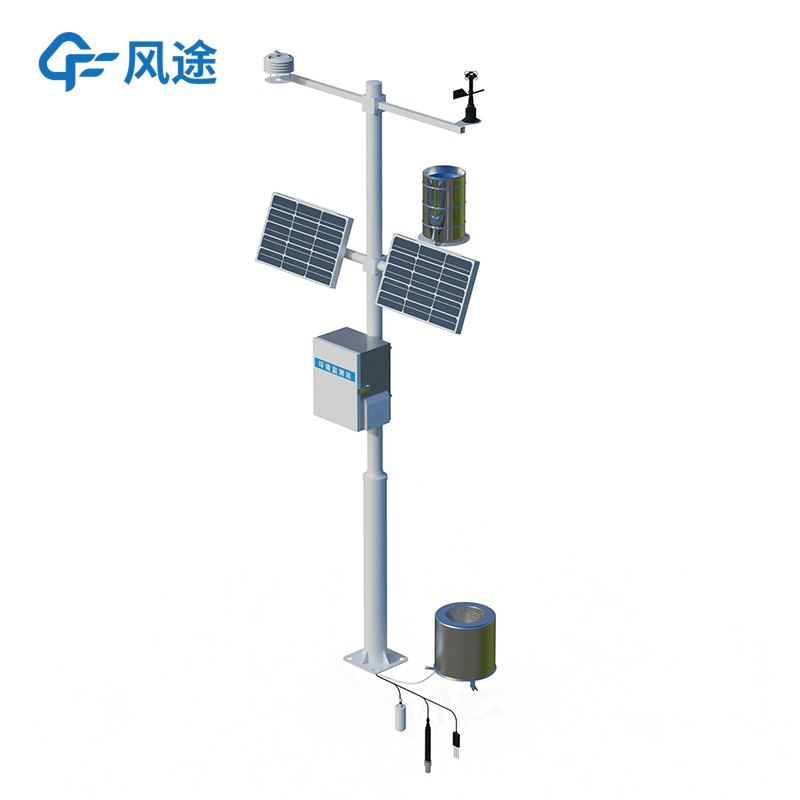Shandong Fengtu IOT Technology Co., Ltd
Sales Manager:Ms. Emily Wang
Cel,Whatsapp,Wechat:+86 15898932201
Email:info@fengtutec.com
Add:No. 155 Optoelectronic Industry Accelerator, Gaoxin District, Weifang, Shandong, China

Sales Manager:Ms. Emily Wang
Cel,Whatsapp,Wechat:+86 15898932201
Email:info@fengtutec.com
Add:No. 155 Optoelectronic Industry Accelerator, Gaoxin District, Weifang, Shandong, China
time:2025-10-10 09:55:16 source:Weather Station viewed:133 time
An Automatic Farmland Weather Station is an agricultural management system based on information technology. It continuously collects environmental data from agricultural production sites and provides decision support for production management through data analysis.
The system uses a sensor network to continuously measure major environmental parameters such as air and soil temperature, humidity, light intensity, rainfall, wind speed, soil pH, salinity, and carbon dioxide concentration.
Users can remotely access the system via computers or mobile devices to view current and historical environmental data. This data is typically presented clearly in the form of numbers, graphs, or charts.
Users can set safety thresholds for various environmental parameters. Once the system detects data exceeding the preset range, it automatically sends alert messages to users, indicating potential risks.
The system records long-term environmental data, allowing users to analyze the relationship between crop growth and the environment. This enables more scientific decisions regarding irrigation, fertilization, pest control, and other aspects of farming.
Irrigation is implemented based on accurate soil moisture data, and fertilization is precisely applied based on soil fertility data, effectively reducing water and fertilizer usage.
Furthermore, automated monitoring replaces the need for manual and frequent on-site data recording and inspection, reducing reliance on human resources.
The system can also promptly identify environmental conditions that may lead to disasters (such as frost, drought, and disease), giving users time to take preventive measures.
This system is suitable for agricultural production areas requiring sophisticated environmental management, such as:
Large-scale farmland, used to guide water-saving irrigation and disaster prevention
Greenhouses with strict environmental requirements, used to regulate temperature, light, water, and air
Orchards and tea plantations, used to monitor microclimate and prevent pests and diseases

Poor ventilation and dense traffic flow in the tunnel can easily lead to the accumulation of harmful gases, posing a threat to safety. The Tunnel visibility detector by Fengtu uses the transmission principle to accurately monitor visibility and CO concentration, safeguarding tunnel safety.Product In...
Both the piezoelectric rain gauge and the Stainless Steel Tipping Bucket Rain Gauge are commonly used tools for measuring rainfall data. So, which of these two products is better? How should consumers choose between them? Next, the editor will provide a detailed comparison of the differences between...
A Portable Weather Station for firefighting is a lightweight and multi-functional weather monitoring device specially designed for fire rescue scenarios. It is mainly used to monitor the meteorological conditions at the fire scene in real-time, helping firefighters assess the development trend of th...
The Visibility Detector is mainly a forward-scattering visibility meter, which is an important instrument for measuring visibility.The transmitter and the receiver are kept at a certain distance and at a certain angle. The receiver only receives the forward-scattering light of the atmosphere. The tr...